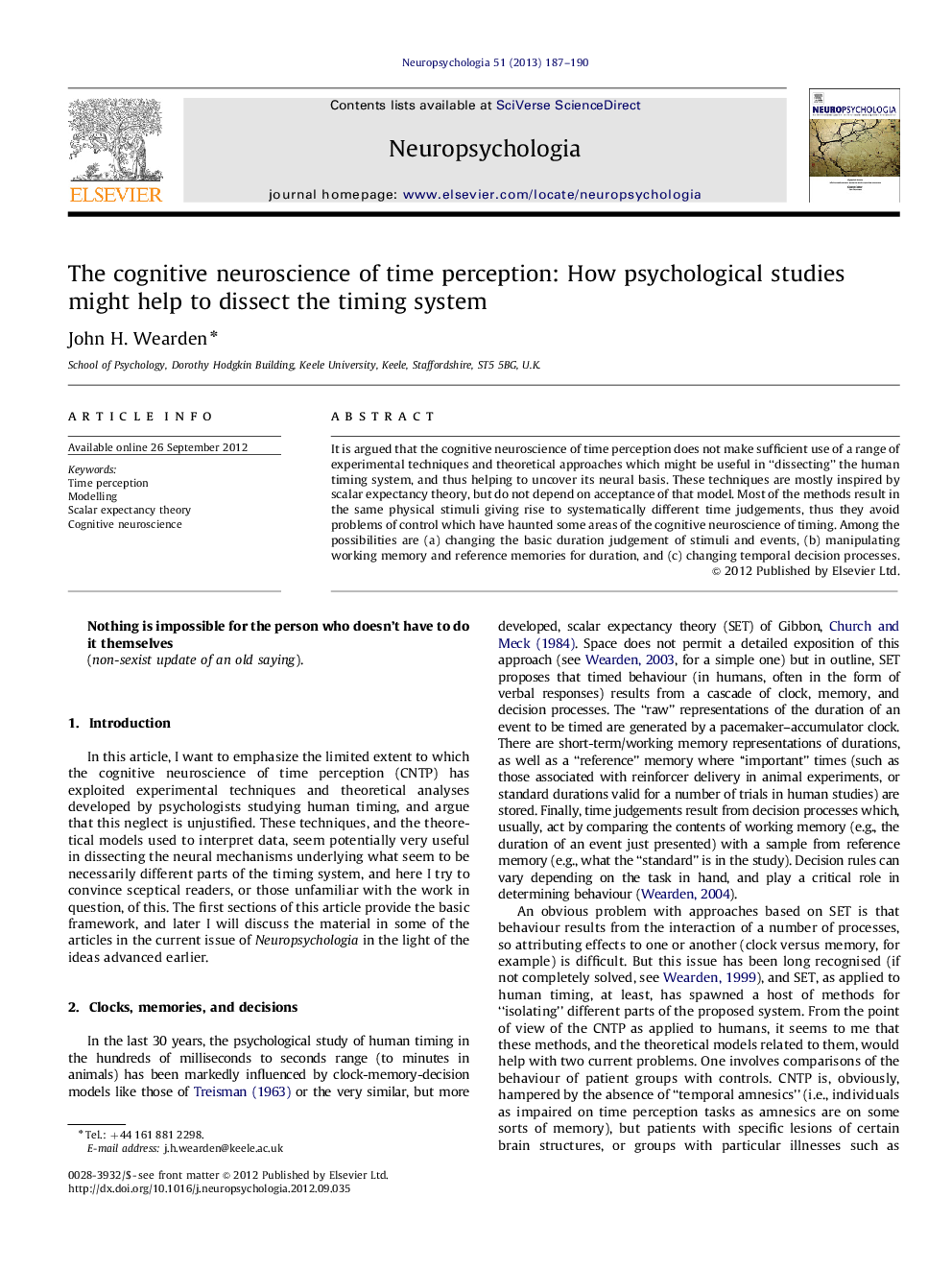| Article ID | Journal | Published Year | Pages | File Type |
|---|---|---|---|---|
| 10464965 | Neuropsychologia | 2013 | 4 Pages |
Abstract
It is argued that the cognitive neuroscience of time perception does not make sufficient use of a range of experimental techniques and theoretical approaches which might be useful in “dissecting” the human timing system, and thus helping to uncover its neural basis. These techniques are mostly inspired by scalar expectancy theory, but do not depend on acceptance of that model. Most of the methods result in the same physical stimuli giving rise to systematically different time judgements, thus they avoid problems of control which have haunted some areas of the cognitive neuroscience of timing. Among the possibilities are (a) changing the basic duration judgement of stimuli and events, (b) manipulating working memory and reference memories for duration, and (c) changing temporal decision processes.
Related Topics
Life Sciences
Neuroscience
Behavioral Neuroscience
Authors
John H. Wearden,
